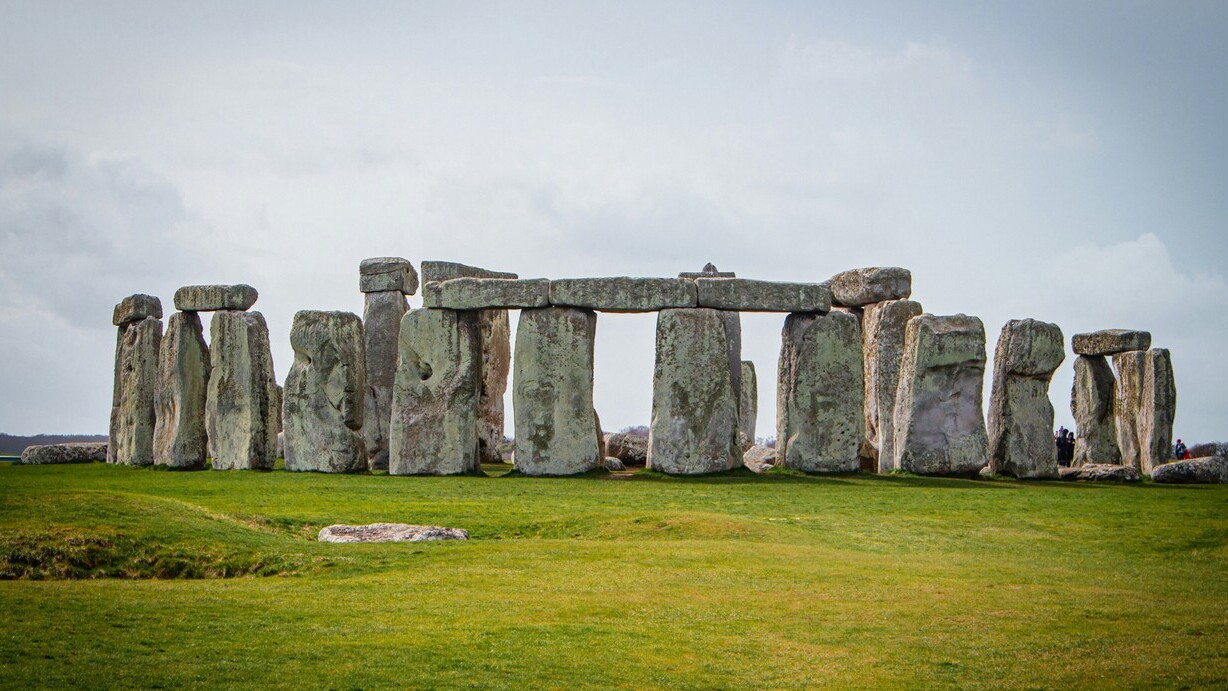Truth & Goodness
The Fall of the Literary Nobel: Why Are Laureates Unread?
14 December 2025

During a May weekend in 2025, darkness descended upon France, bringing the nation to an abrupt halt. Merely weeks prior, in late April, a catastrophic power outage had already thrown the Iberian Peninsula into disarray. Transport networks collapsed, millions were cut off from communication, and industrial activity was brought to a standstill. The economic cost—borne chiefly by Spain—spiraled into the billions of euros. Yet the true narrative extended beyond the outage itself. What stood out was the response of the Spanish and Portuguese people. Blackouts and societal response are intrinsically linked. These events are more than infrastructural failures—they are societal stress tests, illuminating the character, cohesion, and resilience of the communities they disrupt. So what, precisely, did this one reveal?
On the morning of August 14, 2006, at the height of Tokyo’s rush hour, a crane boom collided with a high-voltage power line spanning the Edogawa River. In an instant, vast swathes of the capital were plunged into darkness. Within minutes, 120,000 commuters found themselves entombed in stifling subway cars—motionless, airless, and utterly still.
Then came the silence. As anthropologist John G. Russell observed in The Japan Times, no one screamed. No one succumbed to panic. Instead, passengers sat in hushed anticipation, awaiting instructions with almost surreal composure. The scene echoed the collective stillness that gripped Japan in the aftermath of the 2011 Fukushima catastrophe when rolling blackouts swept the nation.
This unflinching calm is not accidental—it is cultural bedrock. Forged by centuries of seismic upheaval, shaped by the meditative stillness of Zen Buddhism, the hierarchical ethos of Confucianism, and deeply ingrained collectivism, the Japanese psyche is bound by ganbare—a philosophy of relentless “Do your best,”. But ganbare, is more than mere perseverance; it is a quiet, dignified submission of the self to the greater good, even in the face of adversity.
When the lights go out elsewhere, chaos follows. In Japan, the darkness reveals something far more powerful: a society built on silent strength, a remarkable example of blackouts and societal.

Read more: Rethinking Plastic: More Recycling or Reduced Consumption?
In stark contrast to Japan, India’s sprawling and tumultuous society was thrust into the global spotlight as it faced the largest blackout in human history. In 2012, nearly 500 million people across 20 states, including Delhi, Punjab, and West Bengal, were suddenly plunged into darkness.
Yet, in a nation where instability often reigns, the response was remarkably far from chaotic. Unlike Japan’s silent discipline, India’s resilience emerged in a different, rawer form—improvised, communal, and defiantly adaptable. Street vendors pooled their generators, neighbors flung open their doors, and entire communities banded together, relying on a gritty resourcefulness born from living in a land where infrastructure is a constant gamble. India’s blackout didn’t merely expose fragile systems—it laid bare a society hardwired for survival and unyielding endurance.
India’s culture—vibrant, fractured, yet bound by a shared fatalism and fierce community ties—was pushed to the brink. But unlike the chaos you’d expect, there was no mass panic, no societal collapse. Why? Because for India, instability isn’t an exception—it’s the rule.
Here, citizens don’t wait around for government rescue. Decades of shaky infrastructure—and tens of millions living completely off-grid—have forged a society that trusts only itself. When the power died, street vendors hooked up shared generators, neighbors pooled scarce resources, and temples transformed into makeshift shelters. This crisis wasn’t “fixed”—it was endured, absorbed like the relentless monsoon rains or scorching heatwaves. The real shock? A blackout that would cripple the West barely caused a ripple here. In India, darkness doesn’t ignite chaos—it exposes the quiet, relentless machinery of survival, showcasing a unique aspect of blackouts and societal response.
In September 2003, Italy plunged into darkness as a massive blackout knocked out power for 57 million people. Trains stalled, airports froze, and even hospitals faltered—but instead of chaos, something extraordinary happened: the nation came alive. Streets filled with music, neighbors shared wine by candlelight, and spontaneous feasts turned the blackout into a surreal celebration of community.
Now, flip to Venezuela in the 2010s, where blackouts ignited rage, looting, and violence. The difference? Italy’s blackout was a fleeting disruption; Venezuela’s was the breaking point in a nation already fraying at the edges. In one place, darkness sparked unity. On the other hand, it unleashed chaos. This stark contrast highlights the varied nature of blackouts and society response.
While Italians turned blackout darkness into lively street festivals, Venezuela’s power failures unleashed a nightmare. In 2019—and again in 2024—the grid’s collapse didn’t just black out homes; it ignited chaos on the streets that resembled warfare.
“It was like a battle—screaming, gunshots, fights over food,” a Caracas resident told the BBC. Hospitals lost all power, water stopped flowing, and a week-long eruption of riots tore the city apart. Protesters clashed violently with police, pharmacies, and shops were looted and years of pent-up despair exploded in a desperate, brutal frenzy.
Why did darkness spark feasts in Italy but fires in Venezuela? Because Venezuela’s blackout was a symptom of a far deeper collapse.
We recommend: Mind Uploading to Computer: Billionaires Dream of Immortality
The blackouts in Japan, India, and Italy reveal that a society’s crisis response is deeply rooted in its cultural DNA. Venezuela’s catastrophic power failures, by contrast, underscore how political and economic turmoil can shatter that resilience.
Power outages hold up a mirror to society – and nowhere is this clearer than in New York City’s two historic blackouts. The 1965 and 1977 outages, separated by just twelve years, tell dramatically different stories about America itself, illustrating distinct patterns in blackouts and society response. New York City’s twin blackouts bring this contrast into razor-sharp focus—showing us exactly how culture and stability collide when the lights go out.
In November 1965, New York’s blackout plunged 30 million people into darkness, stranding 800,000 commuters underground and extinguishing Manhattan’s iconic skyline. The stage was set for chaos—but instead, the city sparked something extraordinary. What the New York Times called “a massive slumber party” unfolded: strangers shared sandwiches, guided one another through pitch-black stairwells, and millions stood shoulder-to-shoulder, staring up at a sky flooded with stars for the first time in decades. This blackout didn’t just expose America’s technological fragility—it revealed a rare social unity. The event burned so brightly in the national consciousness that within three years, it inspired the MGM comedy “Where Were You When the Lights Went Out?” – cementing the blackout’s transformation from infrastructure failure into a cultural touchstone.
The legend says New York’s 1965 blackout sparked a baby boom. While that’s a myth, the real story is even more astonishing: during that night of total darkness, the city recorded just five burglaries—the lowest crime rate in its history.
Fast forward to July 1977, and everything exploded. In just 25 hours, 1,616 stores were looted, 1,037 fires were set, 4 murders were committed, and 3,776 arrests were made. The city wasn’t just in a blackout—it was unraveling. What tore New York apart in 1977? Everything had changed. The postwar optimism of ’65 had crumbled under the weight of recession, near bankruptcy, a brutal heatwave, the terror of the “Son of Sam” killings, and rampant unemployment. Where 1965 was remembered as “the night we saw the stars,” 1977 went down as “the night the sirens never stopped.” The same city, the same blackout—two vastly different outcomes exposing how fragile civilization is when hope runs dry.

Last month, Spain and Portugal were thrown into sudden, crippling darkness. Streetlights blinked out, traffic froze mid-intersection, trains ground to a halt, and flights were canceled. Commuters were trapped underground, gas stations ran dry, and the digital world vanished—no cell service, no card payments, no ATM cash. The economic damage? Billions were lost in mere hours. But amid the chaos, something surprising happened.
At a gas station near Catalonia, stranded strangers shared sandwiches and water with quiet solidarity—no panic, just calm humanity. In Zaragoza, when the power flickered back but phones stayed dead, bars overflowed with laughter and conversation, life unfolding as if the blackout never happened. One woman trapped in Madrid recalls escaping the metro by emergency ladder but remembers most the kindness around her—not the inconvenience. Spain’s blackout tested not just infrastructure, but the very soul of its people—and it passed. This recent event further illustrates the complex dynamics of blackouts and society response.
Now the real question is: How would we, Poles, react if—or when—the lights go out, would we share our sandwiches? Or would we snatch them and run in panic?
Translated, edited, and compiled from the Polish version by Joanna Sarata

Science
13 December 2025


Zmień tryb na ciemny